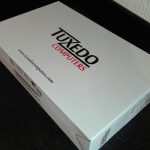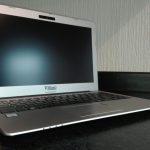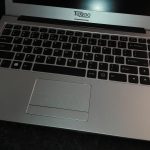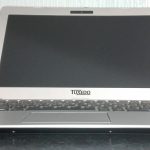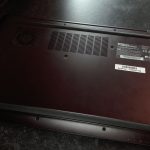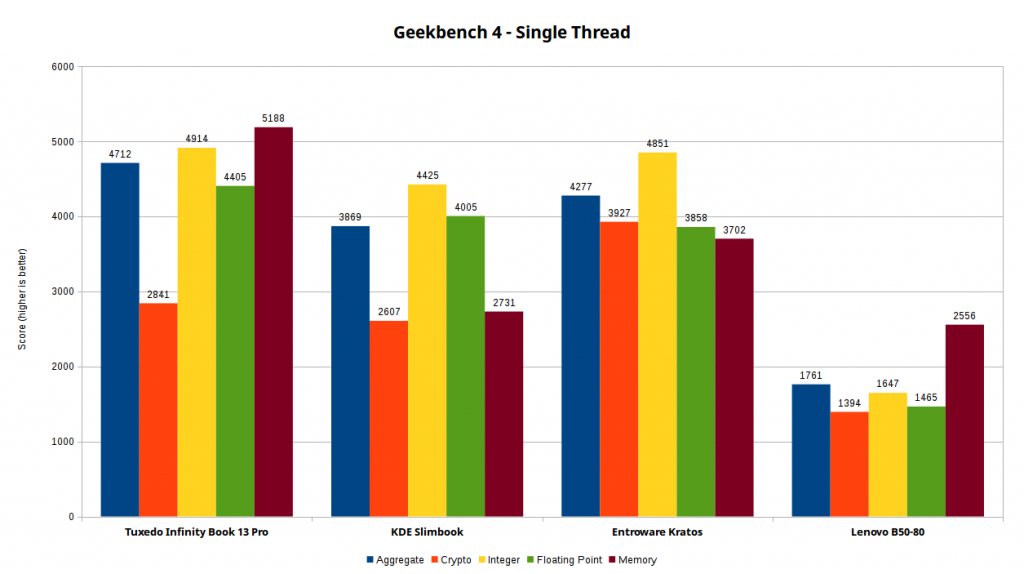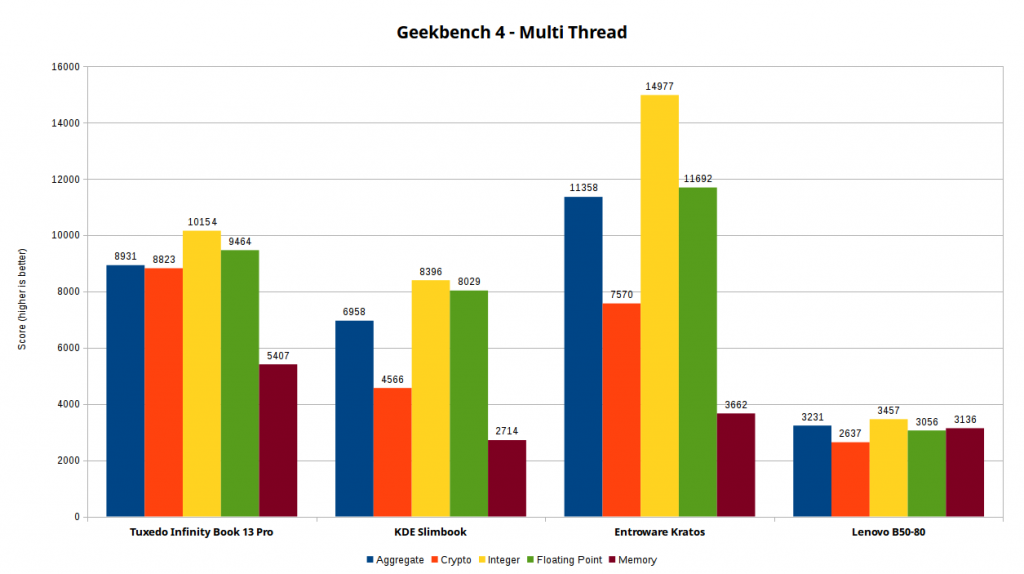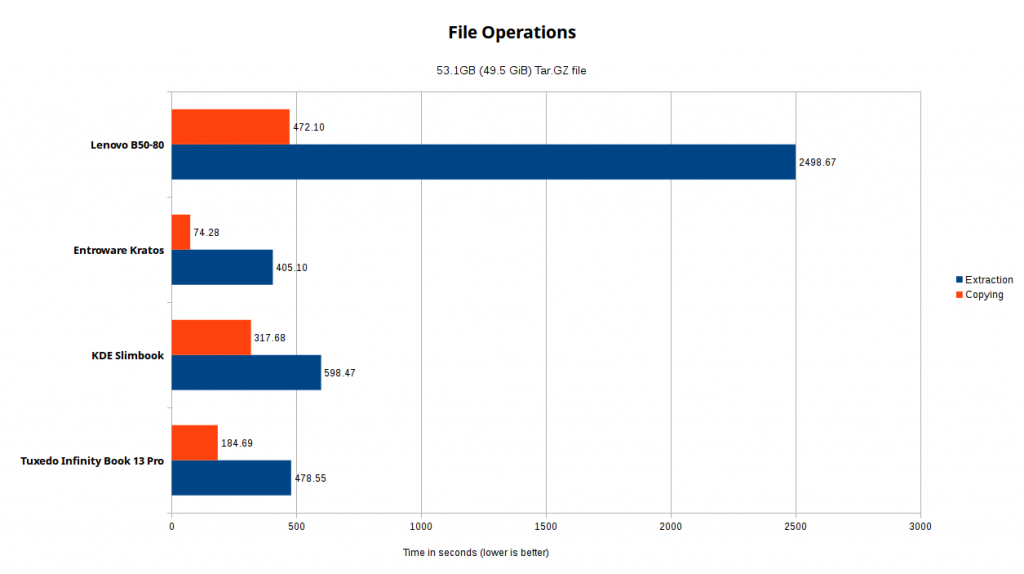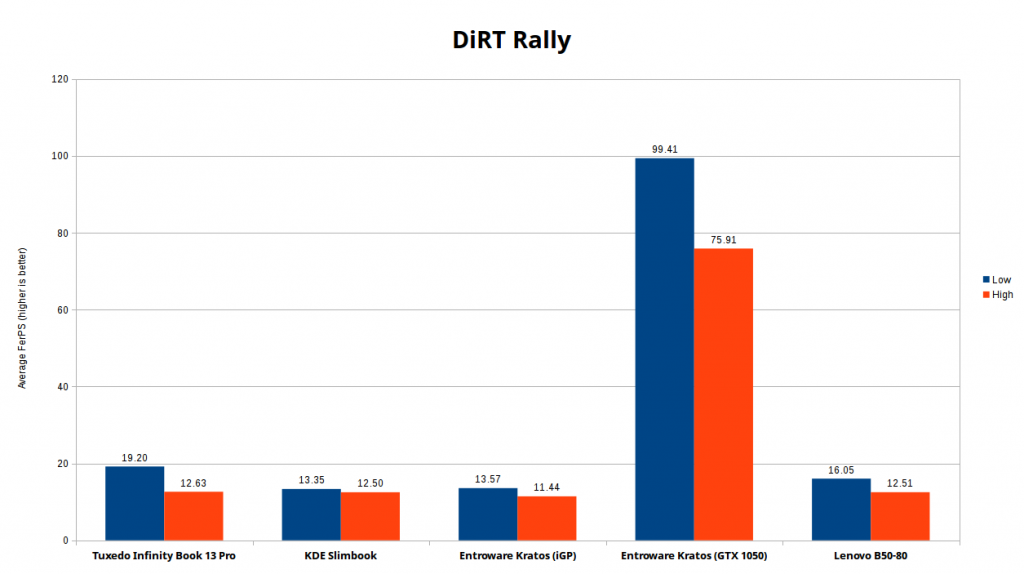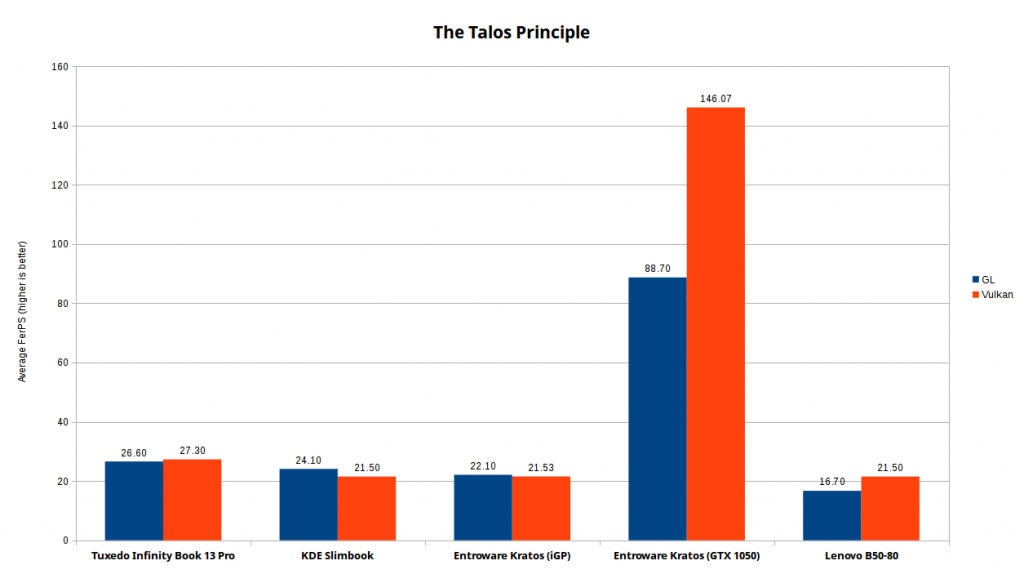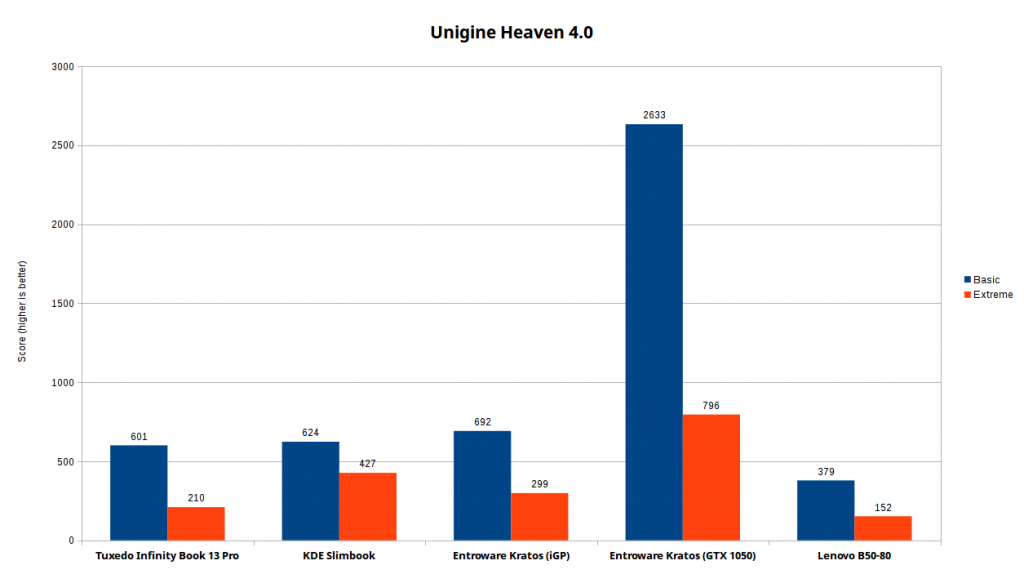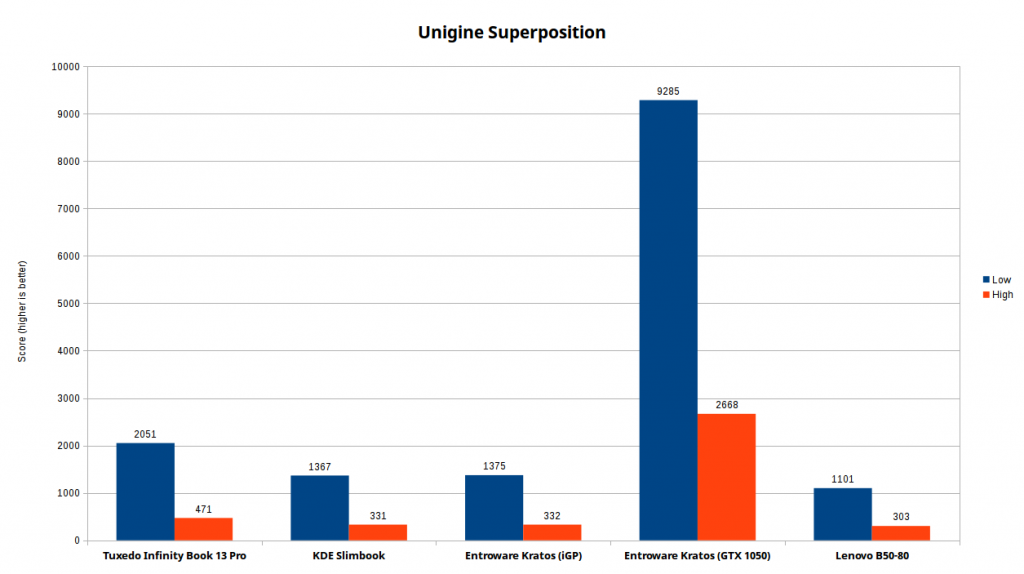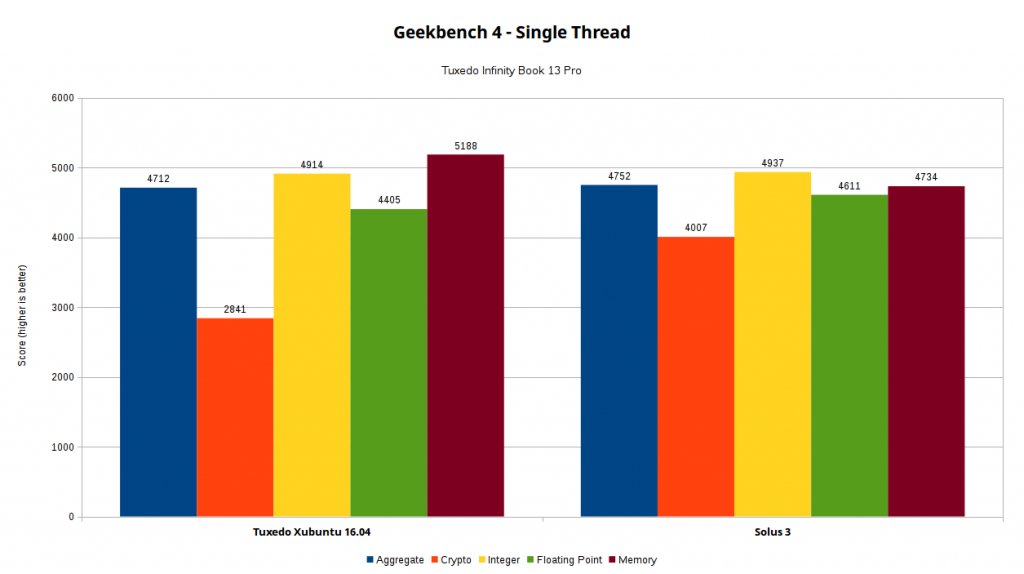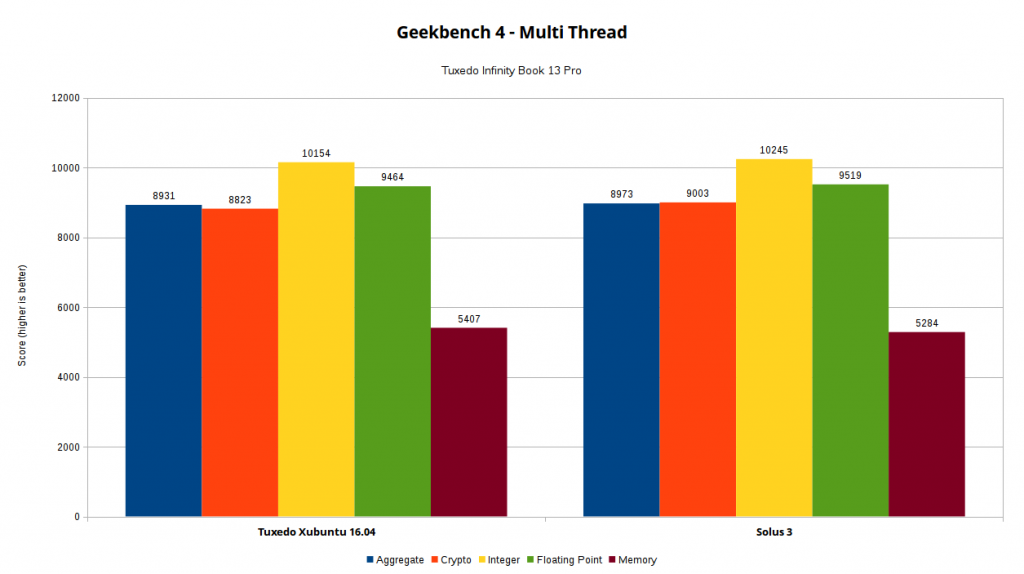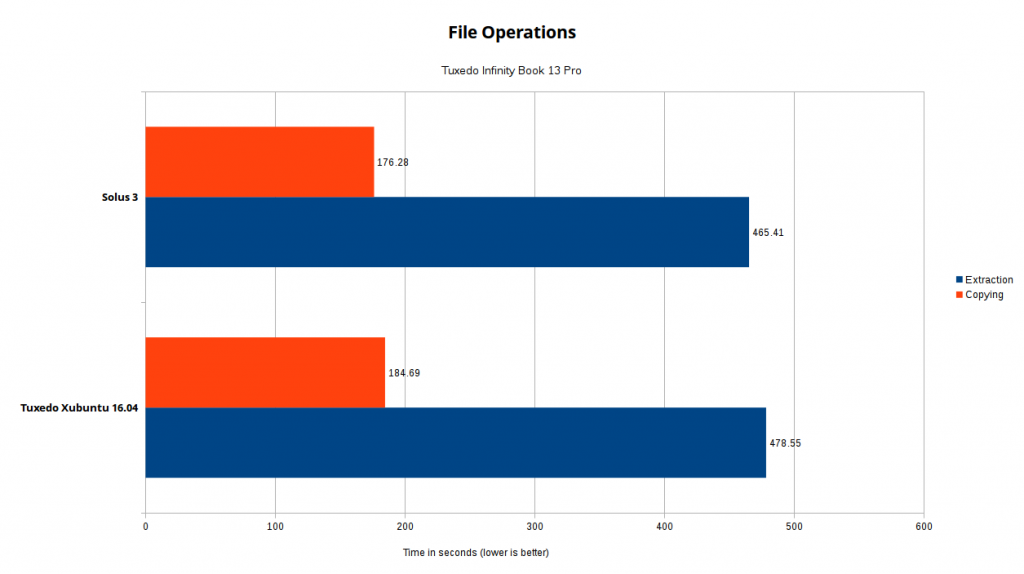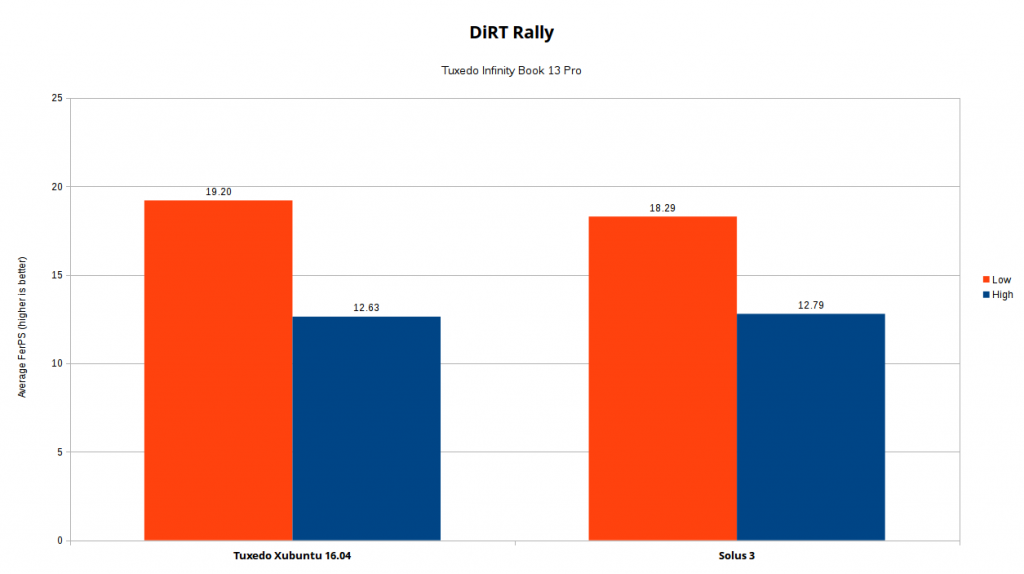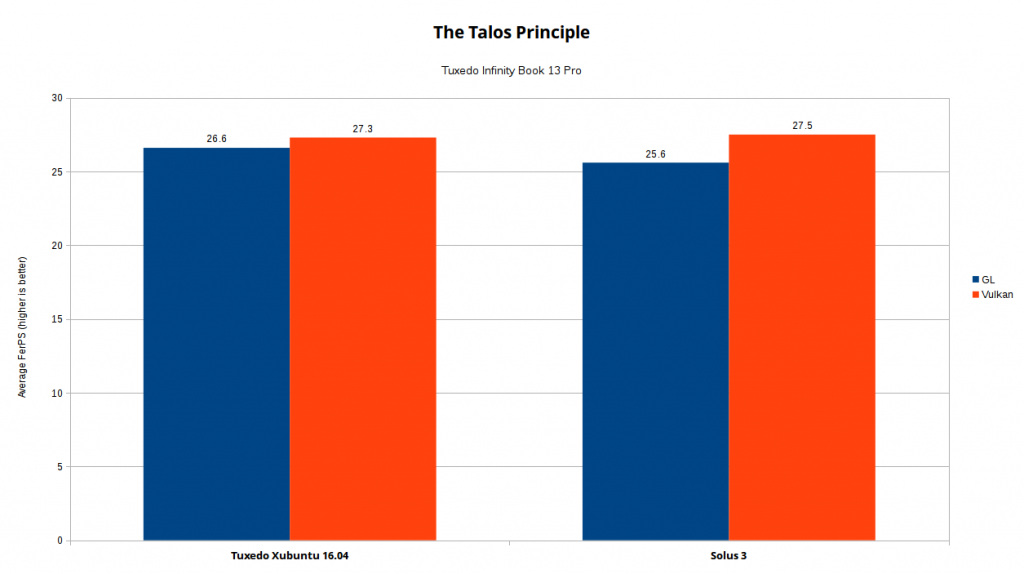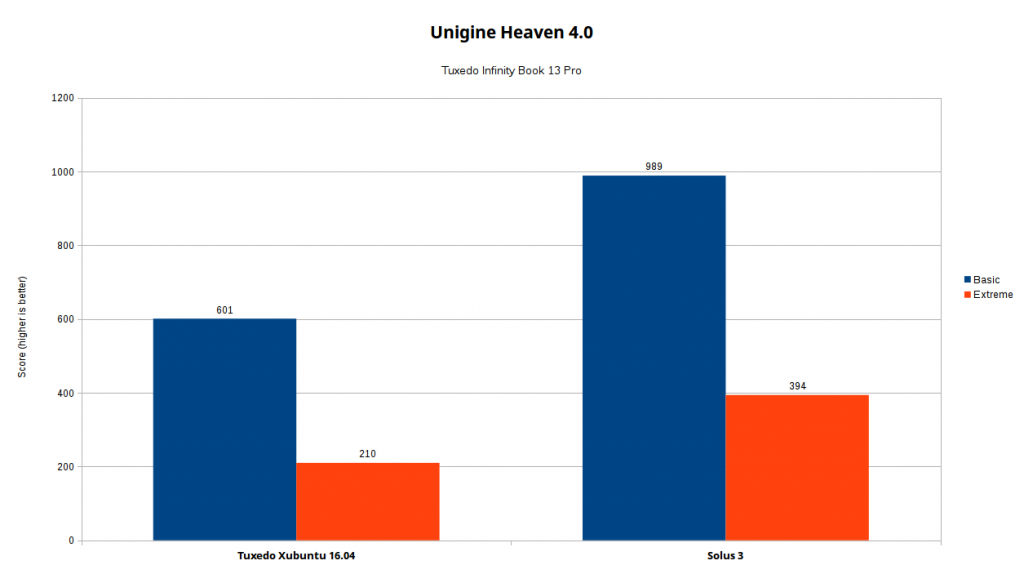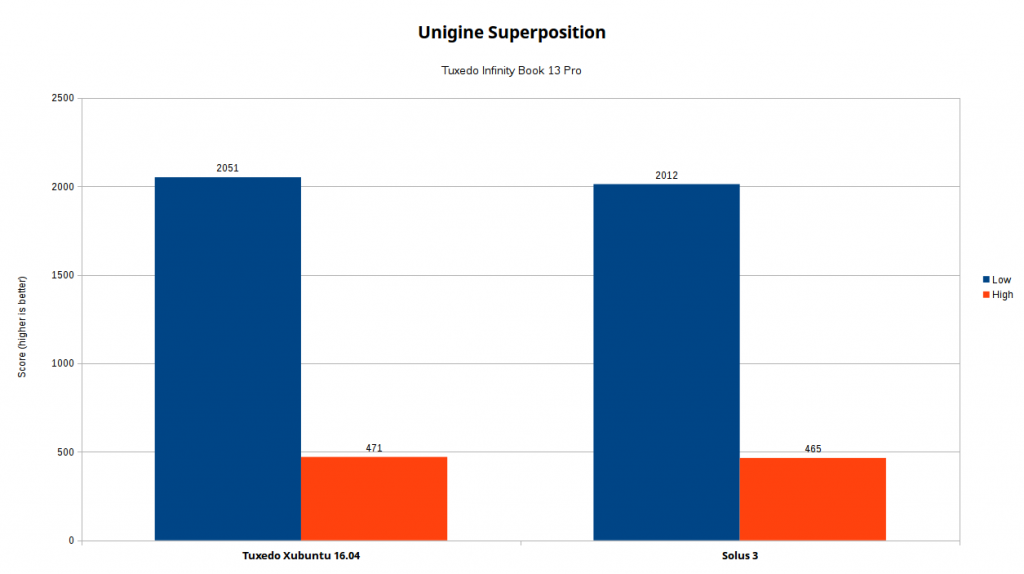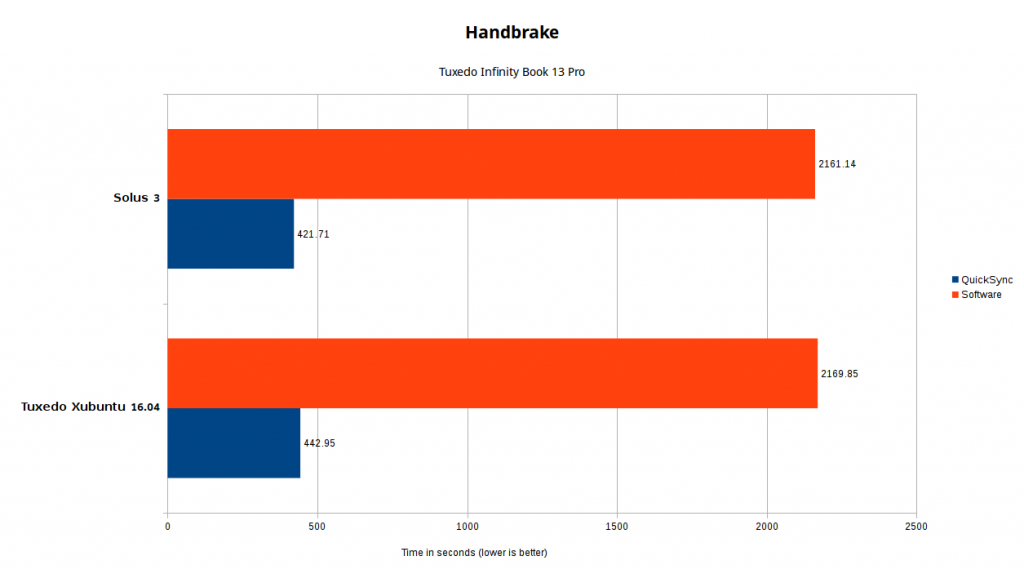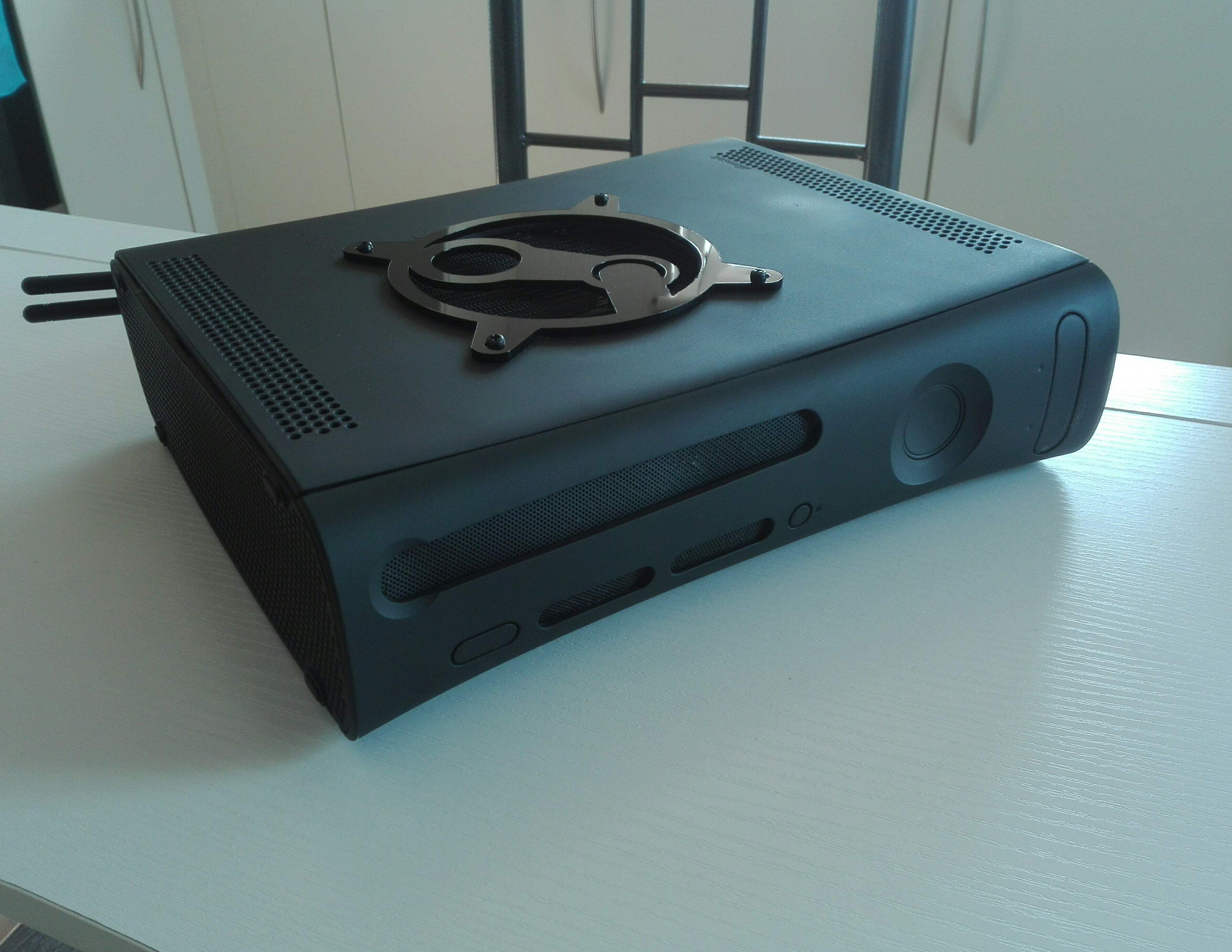We asked Tuxedo Computers for the system they were the most proud of, they delivered!
Index
1. Introduction
2. Specs & Pics
3. CPU & Storage
4. Vidjagames
5. Synthetic GPU Benchmarks
6. Battery, Noise, Price & Conclusion
7. TL;DR & Final Thoughts
1. Introduction
Hey, hey, hey! It’s another one of these.
That’s right! The fine folks at Tuxedo Computers sent us the Infinity Book Pro 13, their high end ultra portable Linux-powered laptop. I can imagine what you’re asking right now; “Are you going to poopoo all over this one just like you did the Slimbook?” Well, no…
But that’s for later.
Right now what matters is that while the Infinity Book Pro 13 and the Slimbook are very much vying for the same market space, this one actually stands a chance. It’s no surprise that some of you may even recognize the hardware, as another Linux laptop I will not be mentioning by name also exists. They’re both based on the Clevo N130BU with different branding and they come loaded with a custom distro. In the case of the Tuxedo Infinity Book, the distro they packed when they sent it to us was their custom Tuxedo Xubuntu 16.04.3. Dismissive as I’ve tended to be of custom Ubuntu spins which every Linux computer seller bundles with their hardware, I have to at least give it a fair shake against the previous laptops we’ve had for review.
Much like the previous reviews, the Infinity Book Pro will be put to the same tests as the Entroware Kratos and the KDE Slimbook. As each graph appears, you’ll find my personal opinions or little factoids about the results below. If you’re in a hurry and just want to look at the pictures, by all means go ahead. But for those of you who do read this, silent majority I assume, there’s an extra round of tests at the bottom of this wall of text with an added bonus comparison. It’s not comparing the Infinity Book to another laptop of any kind, but rather a comparison of the Tuxedo Xubuntu distro’s performance to that of Solus, which nowadays is what I use for laptops because it’s simple, fast, and not based on Ubuntu. Yes, that latter bit is definitely a plus for me. If Linux is supposed to be free to use and modify, why do we have to standardize on Ubuntu? … Yes, I know why. There’s a lot of people and a lot of money being used to develop it, but I’ve always rooted for the underdog. And Solus, seeing as it’s not based on any major distro and is being developed by a very small team of people, qualifies as the underdog.
There I go again. Haven’t even gotten past the Introduction and I’m already waffling. Enough of that, then!
2. Specs & Pics
| CPU: | i7 7500U – 2.7GHz (3.5GHZ Turbo) | Weight: | 1.3Kg |
| GPU: | Intel® HD 620 | Battery: | 35.3WHr (12V) |
| RAM: | 16GB DDR4 2133MHz | Ports: | Separate Headphone and Mic 3.5mm jacks |
| SSD: | 250GB M.2 Samsung 960 EVO | 2 x Type A USB 3.1; 1 x Type C USB 3.1; Full size SD/MMC slot | |
| Display: | 1080p IPS 13.3″ | 1 x Mini Display Port; 1 x HDMI; Full size Ethernet port; SIM slot | |
Yes, the Slimbook comparisons are inevitable from both the outside and the inside. Outside you get a nice aluminum shell, or aluminium if you live in my current neck of the woods, and a 13.3 inch 1080p IPS screen. Inside there is a dual core i7 from U series, with 16GB of RAM and an SSD. Both the Infinity Book and the Slimbook, on the surface seem to share a lot of traits. But Santa is in the details!
Going down to the nitty-gritty spec-stuff, the i7 7500U has much better power efficiency than its Skylake brother, the RAM in the Infinity Book is DDR4 rather than DDR3. It comes with an M.2 960 Evo (like the Kratos), and a much smaller capacity battery. This last bit is important, keep it in mind!
The biggest difference here and the reason I’m already much warmer to the Infinity Book than I ever was to the Slimbook, is the keyboard. “Oh, for fuck’s sake! Here comes the keyboard rant, again.” – Well, no! – “What?!” – I didn’t hate the keyboard on the Infinity Book.
In fact, if you must have a chiclet style keyboard on your laptop, take a page from the Infinity Book (see what I did there?) and do it right! The key travel may still be criminally short but it’s just deep enough to feel satisfying. It feels sturdy, like you could hammer on the keys all day and not feel like they would pop out at any time, or without being mushy like the Kratos’ keyboard. Again if you have to have this kind of keyboard, for whatever bullshit reason, do it like this. I’m okay with it.
The biggest no no for the Infinity Book, as far as the outside is concerned, is the bezel around the screen. At first, it will fool you into thinking it’s aluminum, but after some use you start to notice the scratches and marks from the bottom frame on it. That’s because it’s made of plastic! It sorta ruins the premium laptop feel a little and make no mistake, this is priced at premium laptop level.
3. CPU & Storage
CPU
Let’s talk processor! The i7 7500U is the Kaby Lake version of the Skylake 6600U that is in the Slimbook. If you keep up with tech news at all, you’ll know that Kaby Lake brought no performance improvements over Skylake. Instead it brought much better power efficiency at higher clock rates, which in turn results in better performance with lower power consumption. Since these are laptops we’re talking about, power consumption matters!
For these tests though, all considerations of power savings were thrown out the window and the Performance governor was used while the laptop was plugged in to the mains.
Well, there we have it then. To all the nay-sayers (Jordan) who claimed me an idiot for expecting an i7 U-series to have better performance than the i5 7300HQ, how’s that for single threaded performance? In multi-threaded though, the i5 is still reigning supreme with its 4 actual cores, rather than two multi-threaded cores. Small wins!
Storage
The M.2s are back, baby! That’s right, the Infinity Book Pro 13 comes with an M.2 NVMe Samsung Polaris 960 EVO SSD, similar to that which the Entroware Kratos had.
You’d expect the performance here to rival the Kratos but, as we’ll talk about later on, the extreme power saving measures Tuxedo went through with the Infinity Book do take their toll on the SSD performance. Still, it earns a very cushy second place while curbing the Slimbook up and down the road.
4. Vidjagames
Again, this is purely for the sake of completeness. Much like last time, this is not a gaming machine or a machine which claims to be great for gaming in any way, shape or form. It does provide an interesting comparison between the Kaby Lake and Skylake integrated GPUs. Though, I’m still waiting for someone to send us a laptop with an Iris or Iris Pro graphics chip.
DiRT Rally
The Talos Principle
There it is, then! Finally an iGPU that beats all of the previous Intel HD offerings, in the laptops we tested. As marginal a beating as it may be, with scores this low, any tiny gains are always welcome.
5. Synthetic GPU Benchmarks
Still waiting on that Vulkan option for Superposition. In the meantime, here are a couple more graphs.
Unigine Heaven 4.0
Unigine Superposition
While something is definitely up in those Heaven results, which is happens to be what I call my crotch especially when something is up, Superposition reveals exactly the performance gains to be had with the higher clock rates for both the CPU and iGP. Do keep the Unigine Heaven tests in mind, should you venture into the Final Thoughts!
6. Battery, Noise, Price & Conclusion
Battery
| Battery | Idle | Productive | Gaming |
| Entroware Kratos | 7h31m09s | 4h28m43s | 56m37s |
| KDE Slimbook | 12h11m48s | 6h15m37s | 1h39m22s |
| Tuxedo Infinity Book Pro 13 | 12h50m31s | 8h32m56s | 2h26m24s |
“What?! How can a 35.3 WHr battery last longer than a 53 WHr battery? What the hell are you playing at, Pedro?” – It’s not about the size, it’s how you use it!
Remember when I told you to keep the battery capacity in mind, because it’d be important? Believe it or not I wasn’t wasting your time. This is one of the biggest differences between the Slimbook and Infinity Book. The Slimbook came with a bare-stock version of KDE Neon slapped on it and with little to no care for optimization. The Tuxedo on the other hand, instead of custom hardware, gives you a lot of custom software and firmware tweaks. Remember in the File Ops graph, where the Infinity Book performs significantly worse than the Kratos? That’s because the fine folks at Tuxedo decided to prioritize battery life over performance.
I shot them an email after I ran these tests because even I, the person running the tests, had trouble believing what I was seeing. And I saw it repeatedly! Instead of the usual three test average, I ran the Productive and Gaming tests for the battery a total of 10 times each, over the course of two weeks. Ten whole tests average out to just over eight and a half hours of battery life with their custom version of Xubuntu. When Vinzenz replied to my email he said besides the usual software tweaks and Laptop Mode Tools, they also went into the UEFI/BIOS and prioritized battery in all the settings. It explains the File Operations result and, when paired with a much more power efficient CPU, an absurd gain in battery life.
In case you’ve forgotten, this is a laptop! Battery life is important and Tuxedo has more than proven that they know what they’re doing.
Noise
Seriously, if any of you know of a good db meter style app, let me know! Even without it, I can tell you something very interesting in this category.
All those power optimizations, especially when running a game while the laptop was in battery mode besides the whopping two and a half hours of battery, made the Infinity Book dead silent even while playing DiRT Rally. According to Vinzenz, the fan won’t even spin up until the processor hits 70ºC. “So you’re telling me, playing DiRT Rally the processor never hit 70ºC? Fuck you!” – It didn’t. It didn’t because of how aggressive those power tweaks were and how much the performance is limited while on battery. With their optimizations, even while playing DiRT Rally, there was never a discharge higher than 15W at any point. That’s pretty aggressive and it results in a very quiet laptop when not plugged in.
Price & Conclusion
As reviewed: € 1’263.80 – £ 1’127.72 – USD$ 1’487.18 – CDN$ 1’862.90
As configured, that is a very similar price point to the Slimbook. Similar but with a faster processor, iGPU, M.2 SSD and DDR4 RAM. Don’t get me wrong, it is still very pricey. But when I’m comparing the Infinity Book to the Slimbook, there is one clear winner here.
So, if we’re to tally all of this up and you have £1’130 to spend on an ultra-book style Linux laptop, the Tuxedo Infinity Book Pro 13 is where your money should be spent. You don’t have to take just my word for it, either! Go ahead and compare what I said about Tuxedo’s offering with the exact same hardware as offered by that other competing brand. See how much more battery life Tuxedo managed to squeeze out of that tiny battery.
Remember last time, when I said I was in the market for a thin, light and sturdy Linux powered laptop? I couldn’t justify this much money for the KDE Slimbook but I can almost do it for the Tuxedo Infinity Book Pro 13. Almost… It’s still way too rich for my blood!
7. Final Thoughts
TL;DR
| Good | Bad |
|---|---|
| Thin, solid and lightweight | No easy access maintenance port |
| Great CPU performance | Cheap feeling plastic bezel around the screen |
| Aggressively optimized OS | Expensive |
| Completely silent when in battery | — |
| Amazing uptime on such a small battery | — |
| Full-size RJ45 ethernet port | — |
| Surprisingly not terrible keyboard | — |
What Happens When You Let Pedro Keep a Laptop For a Month
Don’t be scared by those graph thumbnails down below! I’m not going to go through this whole rigmarole for the sake of comparing two distros. “Distros?” Distros!
You may have noticed how I’ve mentioned several times that Tuxedo have their own custom version of Xubuntu. In the email they sent me, besides letting me know I could keep the laptop for twice as long as I did the previous two, they also made mention of their own custom optimizations to the OS. Instead of doing the sensible thing and taking that as just an informative bit, I took it as a challenge.
So, what did I do? I installed Solus on it, gave it my usual round of tweaks, and reran all the tests.
Here are the results:
As you can see, outside of Unigine Heaven, both distros did very similarly. I did leave the BIOS settings be so the comparison would simply be between Solus and Tuxedo’s Xubuntu. I have a sneaking suspicion the performance delta in Heaven comes from the fact Solus was running a more up-to-date version of Mesa. Specifically, Mesa’s GLSL Shader cache being enabled by default for Unigine Heaven with the more recent versions. The battery tests also revealed just how aggressive they were with the battery life optimizations.
| Battery | Idle | Productive | Gaming |
|---|---|---|---|
| Tuxedo Xubuntu 16.04 | 12h50m31s | 8h32m56s | 2h26m24s |
| Solus 3 | 13h05m46s | 6h22m03s | 1h10m07s |
I also ran one more test, which Venn figured it’d be a good addition to the review. If you go to this thread you’ll find all the information you need to run it yourself, if you’d like to compare it to your system. This test also revealed a very interesting fact about Tuxedo’s Xubuntu which the Infinity Book came preloaded with. It comes with Intel QuickSync enabled! That threw a bit of a wrench in my plans because it meant I had to find a way to enable it in Solus. Thankfully, it turned into a matter of downloading and installing Intel Media Server Studio, the Intel Media SDK, and doing a bunch of manual editing of files to tell the system to use the new QuickSync enabled version of va-API. It was a pain in the neck but I managed to get it working. Here’s the result:
Both distros perform about on par with Solus being only slightly faster but damn, does QuickSync save you a lot of time if you’re doing encoding on your laptop.
To wrap it up, if you use your laptop to do work on the go then the Tuxedo Infinity Book Pro 13 gives you awesome performance, long battery life, and more than a few interesting tidbits in a very light and portable package. When I can finally afford to buy myself a new laptop, unless something new comes along which completely blows my mind, I think I’m going to get me a Tuxedo Infinity Book Pro 13. Maybe they’ll even have the Coffee Lake version available for a reasonable price by then.
I like it!

